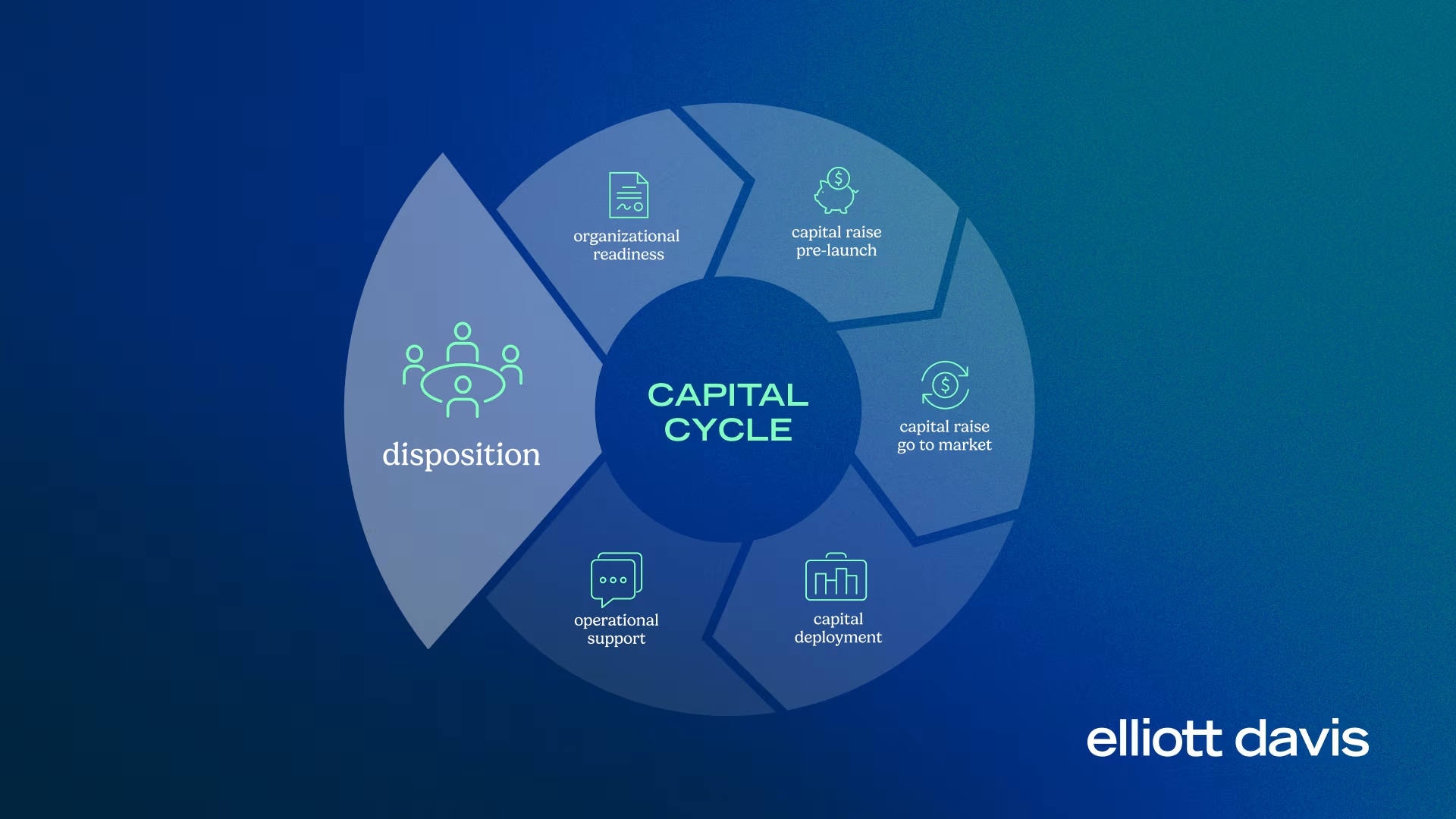search for solutions by category, industries, insights, and people.



The final stage of a real estate investment, the disposition phase, is where strategy meets execution, and numbers tell the story. Amid the excitement and pressure of closing a sale, one area real estate firms and investors often overlook is whether they’ve taken the time to model projected after-tax cash flows.
If the answer is no or not yet, it may be time to pause and evaluate. Failing to forecast tax outcomes can impact investor returns, fund performance, reinvestment plans, and your ability to properly manage cash flows. This article explores why tax modeling during the disposition stage deserves your attention and how to approach it effectively.
In the real estate capital cycle, disposition refers to the sale, exchange, or removal of an asset from a portfolio. This typically occurs when:
While disposition marks the close of a chapter, it opens the door to significant financial decisions. Tax modeling, gain allocation, and cash flow forecasting are all necessary to avoid surprises and preserve investor confidence.
After a sale closes, investors want to know: Where’s my cash and how much of it do I get to keep? Accurate after-tax cash flow modeling helps you:
Many real estate investments are structured through partnerships, which typically don’t owe entity-level federal income tax. However, that doesn’t mean there’s no tax bill. You may still be liable for:
Failing to model these elements could lead to underestimating both the entity’s and your investor’s tax exposure and potentially leave you short on cash.
Increasingly in today’s market, we’re seeing creative deal structures that don’t follow simple pro-rata logic. A well-drafted operating agreement becomes your blueprint for cash distributions and tax allocations. Consider the following questions:
It’s not enough to model how the money flows. You also need to understand why it flows that way, not only to answer investor questions, but also to inform future deal structuring. When partners contribute property or roll-over equity into a new deal, tax allocations can become especially complex. These structural nuances influence the economics of the deal and should be reflected in your model.
A well-constructed tax model can be valuable for both internal and external stakeholders. Internally, it helps maintain enough liquidity to meet outstanding obligations, such as state tax liabilities, while still allowing for timely distributions to investors. No firm wants to distribute all available cash only to discover more is needed for taxes. Externally, keeping investors informed early about their potential tax exposure allows them to plan their own cash flow with confidence. That level of transparency can strengthen relationships and support future investment.
Cost segregation studies are a great tool to accelerate depreciation and reduce taxable income during the earlier years of the hold period. However, at disposition, they can have the opposite effect by increasing the portion of gain subject to higher tax rates. The IRS requires depreciation recapture to match part of the gain to previously claimed deductions. Since that depreciation was deducted at ordinary income rates, the corresponding portion of the gain is taxed the same way.
Why it matters:
If you assume the entire gain is taxed at 20%, you could be severely underestimating your investor’s tax liability. A well-structured tax model should incorporate the different gain classifications to provide accurate net distribution projections.
Not all partners enter a deal the same way. Some contribute cash. Others may contribute property or roll-over equity through a tax deferral strategy like a 1031 exchange. These approaches are often part of broader tax planning efforts tailored to each investor, but they can significantly impact tax allocations at disposition.
With the time value of money always top of mind, strategies that defer gain recognition and preserve cash have become increasingly popular. While these strategies delay taxes, the bill eventually comes due. These scenarios often create highly disproportionate tax allocations as, for example, one partner may have a significant built-in-gain to recognize on a property or equity contribution. By modeling inflated gain recognition properly, you can incorporate the tax bill directly into your cash flow planning.
When investors contribute significant capital, it becomes even more important to stay informed and maintain a detailed gain allocation model. That way, you can clearly explain how and why each investor received their specific distribution when questions arise.
Consider how multi-state taxation will affect the disposition. Pay close attention when properties or investors span multiple states. Keep the following in mind:
State tax rules vary dramatically, leaving a wide margin for error. In some cases, noncompliance can cause the firm to lose funds or even face personal liability, especially if you distribute all proceeds before paying taxes.
The disposition phase often uncovers issues within the existing entity. Common findings include:
To protect buyers, purchase agreements often include holdbacks, which delay cash flows and complicate tax timing. Be sure to factor these into your models.
Smart firms plan ahead by incorporating tax strategy into closing and reinvestment decisions:
Withholding enough to meet obligations, but not so much that it limits your reinvestment capacity, is a delicate balance that requires proactive planning.
Proper tax modeling is a strategic step that builds investor confidence through transparency, reduces surprises by anticipating tax obligations, and supports smarter reinvestment decisions through stronger cash flow management. By addressing these areas upfront, you create a clearer, more predictable financial picture for all stakeholders.
At Elliott Davis, we work closely with real estate firms and investors to bring clarity to the disposition phase. From multi-entity waterfall modeling to gain projections and multi-state tax considerations, we help you move forward with confidence.
Contact us today to get started.